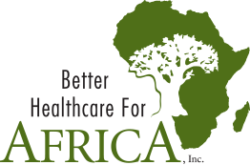Today I accompanied Julia on her rounds through the Men’s Ward, then we walked to the agricultural and water projects. Overall, the hospital has many burn cases, many related to tobacco growing and curing. Also there are broken or crushed bones related to the use of ox-carts, and several attempted suicides. Other cases include a child, 11, with possible osteomyelitis; a snake bite; a boy, 16, who inflicted a deep gash in his foot while cutting wood for tobacco curing. There were cases of epilepsy; pneumonias and other HIV-related conditions; and TB.
First was a sad case, a six-year-old boy with severe burns to the chest, neck, and face. His grandparents had left him alone to work their field and returned to find that his clothes had caught fire. They didn’t know how it happened. His clothes were of a synthetic fabric that clung to the burned flesh. Next there is boy, a young teen, who fell from an ox cart and broke his femur just below the head. A pin is needed to correct the break, but referral is not possible and Julia said they cannot do open reductions, so the boy is in traction…for four days so far, with two or three weeks needed.
We come to a 48-year-old man lying in his hospital bed waving one arm in the air and calling out incoherently and may be convulsing. He’d attempted suicide by drinking the solution in which cattle are dipped to kill ticks. He seems in pain. Julia explains the circumstances. He may be an untreated epileptic who earlier attended prayer healing sessions. He’d gone to church and elders had told him something he didn’t understand, and he chose to take his life. His younger brother is by his side.
Someone tells me that the six-year-old boy is in the small theatre, which is used for cleaning wounds and similar procedures. She is changing the boy’s dressings and checking the skin grafts. The child is lying on his back, a nurse is holding his hands, and Neela drips normal saline on the bandages and talks softly to him as she gently peels them off. The child cries out, she speaks to him softly. Many of his cries are in fear that it will hurt rather than from the pain itself, and as soon as she stops, his voice drops to normal. They are speaking Shona, so I don’t know what words are being said, but the child is courageous also. The child has a bandage around each thigh, marking where the skin grafts were taken. These wounds must heal also. The grandmother was in the room for a time, then left to sit outside.
“This burn case is a big hospital expense, but then such cases tend to happen to the poorest of the poor…those who are least able to pay,” Neela says during a pause. She has given the child morphine to ease the pain, and it settles him some, but he still cries out.
The dressings off, Neela gently swabs the large wounded area. “Chop, chop!” – hurry, hurry! – the boy cries. Neela said that the child senses that these things must be done. The grafts, though small for the area of the wound, seem to be taking, Neela says. Even if the healing goes well, he faces a long and painful period of rehabilitation to prevent formation of contractures that could bend his head permanently to one side and cripple his arm.
I rejoin Julia. There are a series of HIV-positive patients. On, an old man with a CD4 count of 55 (normal is 800-1,200). His nephew and the nephew’s wife are with him. He was treated earlier for oral thrush and now a chest X-ray shows signs of pneumonia. We come to a young man with oral thrush and a CD4 count of 64, but his general condition is good. He will be treated for pneumonia, and he will start antiretrovirals the next time Julia visits his rural health clinic. He must bring his wife so that both understand how they are to be taken.
We come to an older man with burned forearms, suffered February 17. He comes from a nearby village and was attending to the fire while curing tobacco when he fell forward into the fire. His left arm was healing well, except for a small patch; the right has many raw areas and was developing contractures at the elbow. As a result, he cannot straighten it well. His employer came by and gave him some money for food; his brother-in-law is tending his fields. Julia tells him he must exercise it, extend it, or it will contract further as it heals.
The hospital is seeing many burns related to tobacco curing. Tobacco is a cash crop and several farmers did well last year growing, so more are growing it this year. Julia said that curing is often done through means other than the “traditional arrangement.” More tobacco-curing injuries were to come among the women and children.

Darrell,
Very interesting report and affirms why we do what we do. When there is so much suffering in the world that we feel helpless to change it is good to hear of some pain being alleviated at least for awhile. I am also relieved to hear that you don’t feel in danger (I think that is what I hear). Thank you for representing BHA for all of us and take care of yourself. Our best to St. Albert’s and all the people who make it run.
Hi, Pam, Thanks for your comment. I left Zimbabwe this afternoon at 1:40. I landed two hours later in Gaborone where I was met by Dr Jon Silverman. He and his wife Elizabeth are young pediatricians working at Princess Marina Hospital through the University of Botswana. Time is running short! Thanks again…Darrell